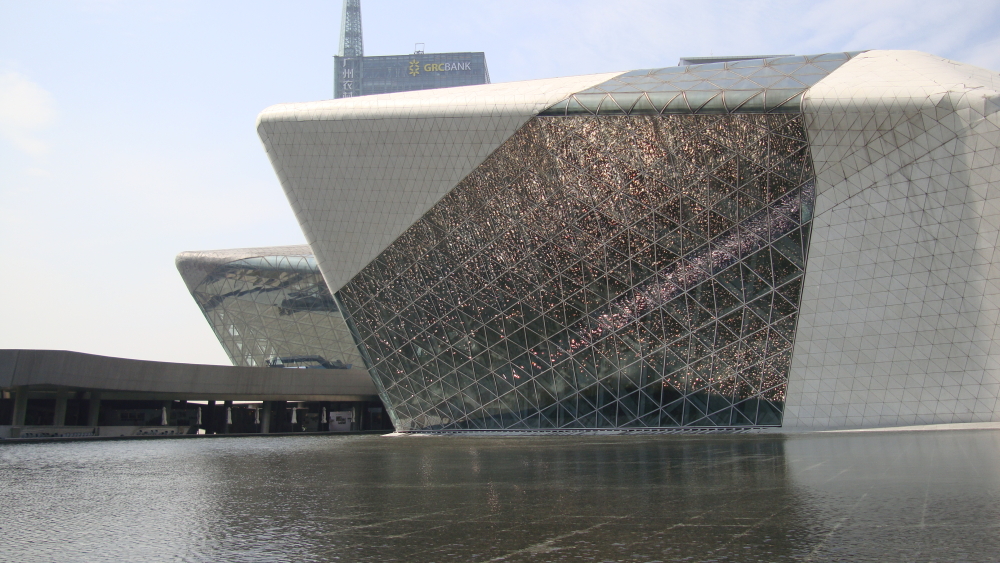[ot-caption title=”Architect Zaha Hadid’s design for the Guangzhou Opera House in China was chosen in 2002. (via, Mr. A, Wikimedia)”]
On March 31, 2016, the world bid its final farewell to renowned architect Zaha Hadid after the announcement of her abrupt death. The Iraqi-born British architect, dubbed as the queen of curve, was the mastermind behind a myriad of spectacular buildings such as the Guangzhou Opera House and the 2012 London Olympic Aquatic Centre. Hadid’s unique style of sweeping, fluid forms of multiple perspective points and fragmented geometry simply cannot compare to the architectural wonders seen in most parts of the world.
Following the opening of her own London-based architecture practice in 1980, Hadid’s career took off. She gained international reputation by showing her drawings as part of an exhibition at the Museum of Modern Art in New York City. Nowadays, Zaha Hadid Architects has over 20 completed projects and will continue its ongoing projects that include the Iraqi Parliament building in Baghdad and a 2022 FIFA World Cup stadium design in Qatar. According to her firm’s website, Hadid was working on 950 projects in 44 countries with 400 staff members. In 2004, Hadid was the first Muslim woman to receive the prestigious Pritzker Architecture Prize, and was named a Dame Commander of the Order of the British Empire in 2012.
Growing up in what was mostly seen as a man’s world in the field of architecture, Hadid broke the barriers of social and gender norms to design her impressive structures that redefined architecture. She once told an interviewer, “I am non-European, I don’t do conventional work and I am a woman. On the one hand, all of these things together make it easier, but on the other hand, it is very difficult.”
Having contracted bronchitis, Hadid visited a Miami hospital to be treated where she unfortunately suffered a sudden heart attack at age 65. While she left many unfinished projects behind, her legacy will continue to live on through her completed, striking works. Amale Andraos, the dean of Columbia University’s Graduate School of Architecture, Planning, and Preservation (GSAPP), described Zaha Hadid as “bigger than life, a force of nature. She was a pioneer.” Throughout her successful lifetime, Hadid truly proved herself to be a pioneer not only in her field, but also for what cities should aspire to be.
Sources: Zaha Hadid Architects, The New York Times, BBC News, ArchDaily, Wikipedia, Wikimedia
































![Stranger Things 4: What to Expect [Warning: Contains Spoilers]](https://pcpawprint.com/wp-content/uploads/2021/11/StrangerThings4-900x473.jpeg)



























































